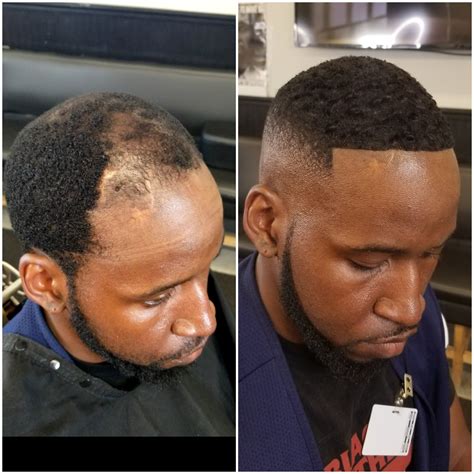Introduction

Male hair loss is a common concern affecting millions worldwide. Hair units offer a discreet and effective solution to restore a youthful, confident appearance. In this comprehensive guide, we explore five essential hair units for men, empowering you to make an informed choice that meets your unique needs.
1. Non-Surgical Hair Replacement (NSHR)
NSHR involves attaching a custom-made hairpiece to the scalp using adhesives or clips. It’s a versatile option that:
- Provides a natural-looking result that blends seamlessly with existing hair
- Can be removed for cleaning and maintenance
- Requires minimal downtime and allows for immediate results
Advantages:
- Realistic appearance
- No surgery required
- Easy to apply and remove
Disadvantages:
- Adhesives can irritate sensitive skin
- Requires regular maintenance and upkeep
- May not be suitable for advanced hair loss
2. Hair Transplants
Hair transplants involve surgically removing healthy hair follicles from a donor area and implanting them into areas of hair loss. It’s a permanent solution that:
- Produces a natural, long-lasting result
- Resists thinning and shedding
- Can be used to fill in bald patches or create a new hairline
Advantages:
- Permanent results
- Natural-looking hairline
- Can enhance self-esteem and confidence
Disadvantages:
- Requires surgery with associated risks
- Recovery time is several months
- Can be expensive and may require multiple sessions
3. Scalp Micropigmentation (SMP)
SMP is a non-invasive procedure that creates the illusion of thicker hair by tattooing tiny pigments directly onto the scalp. It’s ideal for:
- Men with thinning hair or early stages of baldness
- Individuals who prefer a low-maintenance solution
- Covering scars or scalp irregularities
Advantages:
- Provides a subtle, natural-looking result
- Quick and painless procedure
- Low-maintenance and long-lasting
Disadvantages:
- Can fade over time and require touch-ups
- Not suitable for all scalp types or hair colors
- May not be as effective for advanced hair loss
4. Laser Hair Therapy (LHT)
LHT uses low-level laser energy to stimulate hair follicles, promoting hair growth. It’s a non-invasive treatment that:
- Improves hair density and thickness
- Strengthens existing hair shafts
- Can slow down or stop hair loss
Advantages:
- Safe and effective for most hair types
- No side effects or downtime
- Can be used in conjunction with other hair restoration treatments
Disadvantages:
- Requires regular treatments for best results
- May not be effective for all types of hair loss
- Can be expensive
5. Minoxidil and Finasteride
Minoxidil and finasteride are FDA-approved topical medications that promote hair growth. Minoxidil directly stimulates hair follicles, while finasteride blocks the production of the hormone that causes hair loss. They’re often used together for:
- Slowing down hair loss
- Promoting new hair growth
- Maintaining existing hair
Advantages:
- Non-invasive and easy to use
- Relatively affordable
- Can be effective in preventing further hair loss
Disadvantages:
- Requires daily application for results
- May cause side effects such as scalp irritation or sexual dysfunction
- Not suitable for all types of hair loss
Choosing the Right Hair Unit: Considerations
The best hair unit for you depends on your individual needs, budget, and lifestyle. Consider these factors when making your decision:
- Type and extent of hair loss
- Cost of the procedure and ongoing maintenance
- Time and effort required for application and upkeep
- Desired level of results and permanence
Conclusion
Hair units for men offer a wide range of options to address hair loss concerns. Whether you seek a permanent solution or a temporary fix, there’s a hair unit tailored to your unique preferences and requirements. Consult with a qualified hair restoration specialist to explore your options and make an informed choice that empowers you to regain a fuller, more confident head of hair.
